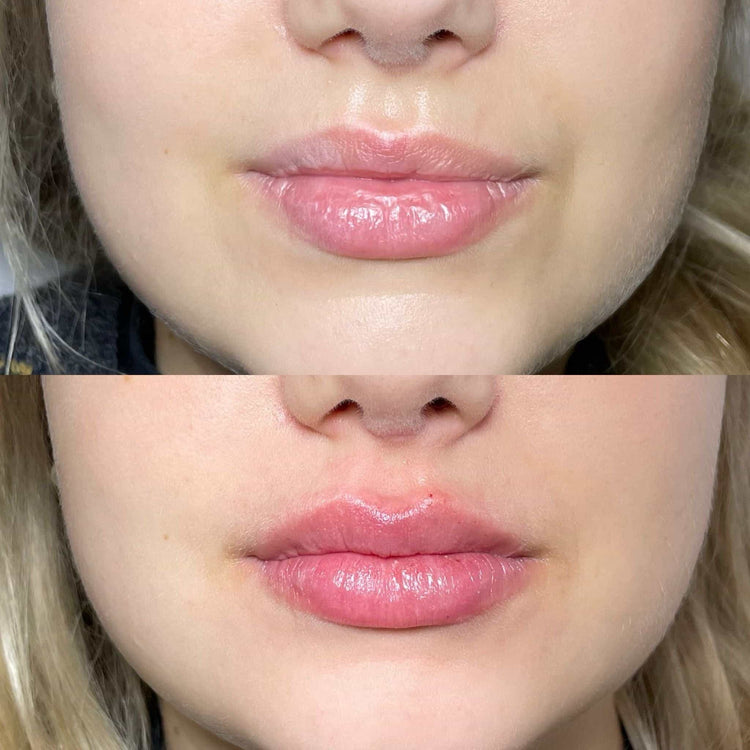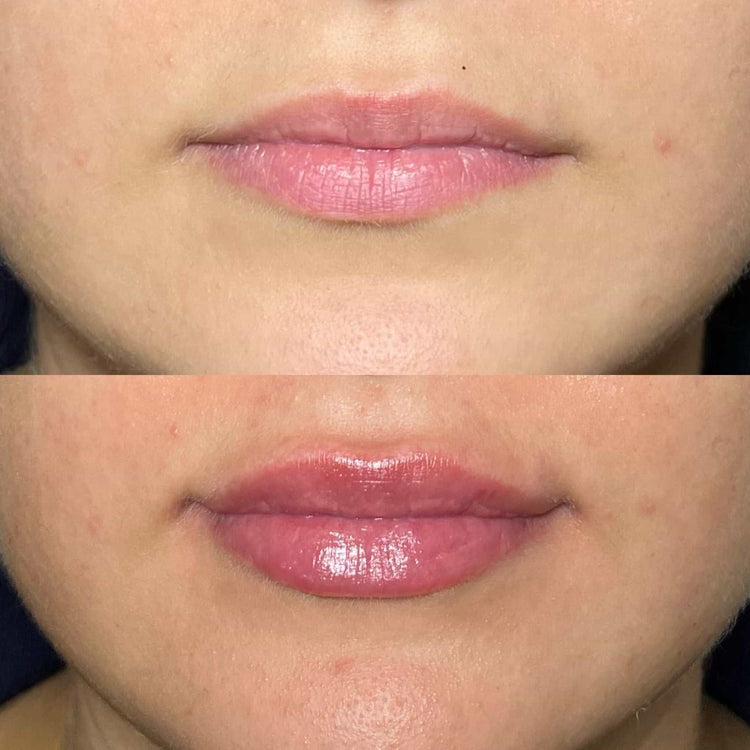Long-Term Results
Determining if lip fillers look better over time can be complex. The longevity of results, individual healing processes, and changes in facial structure all contribute to how a person’s lips appear as time progresses.
Initial Appearance
Determining whether lip fillers look better over time is subjective and depends on various factors. While initial appearance is important, long-term results are influenced by several elements.
- The type of filler used impacts longevity, with some lasting longer than others.
- Individual metabolism and lifestyle can affect how quickly the filler breaks down.
- Repeated treatments maintain a fuller appearance, as natural collagen production may decrease over time.
- Facial aging and changes in bone structure can influence the final look of the lips.
Gradually Fading
Long-term results with lip fillers are a multifaceted consideration. While initial satisfaction is important, how the filler ages and integrates with your facial structure plays a crucial role in determining the overall aesthetic outcome.
- The type of hyaluronic acid used significantly impacts longevity, with some formulations designed for longer-lasting results.
- Individual metabolic rates and lifestyle factors can influence how quickly the filler is metabolized by the body.
- Maintaining a consistent treatment schedule helps prolong the appearance of fullness, as natural collagen production naturally declines over time.
- The inherent aging process affects facial structure, including lip contours, which can subtly modify the look of fillers over time.
Repeated Treatments
Long-term results with repeated lip filler treatments depend on several interacting factors.
The longevity of the filler itself is a major consideration, with different hyaluronic acid formulations varying in their duration. Some are designed for longer-lasting effects than others.
Individual metabolism and lifestyle also play a role. A person’s metabolic rate and habits can influence how quickly the body breaks down the filler material.
Repeated treatments are often necessary to maintain fullness over time. As we age, our bodies naturally produce less collagen, which contributes to facial volume loss, including in the lips. Regular treatments help counteract this process.
It’s important to remember that facial structure changes over time due to aging and bone resorption. These natural changes can subtly influence how lip fillers appear as years progress.
Factors Affecting Longevity
Several factors interplay to determine how lip fillers look over time. The longevity of the filler itself, individual metabolism, lifestyle choices, and the ongoing process of facial aging all contribute to the final aesthetic outcome.
Filler Type

The type of filler used significantly impacts how long it lasts. Hyaluronic acid is a popular choice for lip fillers, and there are different formulations available with varying durations. Some are designed to be more long-lasting than others.
Individual factors also play a role. Metabolism and lifestyle choices can influence how quickly the filler is broken down by the body. For example, someone with a faster metabolism might see results fade sooner than someone with a slower metabolism.
Repeated treatments help maintain fullness over time as collagen production naturally decreases with age. Regular touch-ups can ensure that the desired look is sustained.

Finally, facial aging and changes in bone structure can subtly modify the appearance of lip fillers over time. As we age, our faces change, and this can affect how fillers integrate with our features.
Injection Technique
The longevity of lip filler results depends on various interconnected factors.
One crucial factor is the type of hyaluronic acid used in the filler. Different formulations have varying degradation rates, resulting in different durations of effect.
Individual metabolism and lifestyle choices also play a role. Rapid metabolism or habits like smoking can accelerate filler breakdown, leading to quicker fading.
Repeated treatments are often necessary to maintain fullness over time as natural collagen production declines with age.
Finally, the ongoing process of facial aging, including bone resorption and skin changes, can subtly influence how lip fillers appear as years progress.
Individual Metabolism
Individual metabolism plays a significant role in determining how long lip filler results last. People with faster metabolisms tend to break down substances, including fillers, more quickly. This means they may require touch-up appointments sooner than individuals with slower metabolisms.
Lifestyle factors can also impact the longevity of lip fillers. Smoking and excessive sun exposure can damage collagen and elastin, the proteins responsible for skin structure and elasticity. This breakdown can accelerate filler degradation and make results less long-lasting.
Understanding individual metabolism and lifestyle habits allows practitioners to provide personalized recommendations and help patients manage their expectations regarding lip filler longevity.
Lifestyle Choices
Numerous factors influence lifespan, with lifestyle choices playing a significant role.
Diet directly impacts health and longevity. A balanced diet rich in fruits, vegetables, whole grains, and lean protein provides essential nutrients for cellular function and disease prevention.
Regular physical activity strengthens the cardiovascular system, improves metabolism, and reduces the risk of chronic diseases, contributing to a longer lifespan.
Adequate sleep is crucial for cellular repair, hormone regulation, and cognitive function. Consistent quality sleep supports overall health and longevity.
Managing stress through techniques like meditation, yoga, or spending time in nature can reduce the negative impacts of chronic stress on physical and mental well-being, promoting a longer lifespan.
Avoiding tobacco and excessive alcohol consumption is essential. Smoking damages lungs and increases the risk of cancer, heart disease, and other chronic illnesses. Excessive alcohol intake can lead to liver damage, weakened immunity, and an increased risk of various diseases.
Maintenance and Touch-Ups
Understanding how lip fillers evolve over time requires considering several interconnected elements.
Frequency of Touch-Ups
The frequency of touch-up treatments for lip fillers depends on several factors, including the type of filler used, individual metabolism, lifestyle choices, and desired aesthetic outcome.
Generally, hyaluronic acid fillers, which are commonly used in lip augmentation, tend to last anywhere from six months to two years.
During the initial months after treatment, subtle adjustments may be needed as swelling subsides and the filler settles into its final position.

For many individuals, touch-up appointments every 6 to 12 months are sufficient to maintain fullness and desired shape.
However, some people with faster metabolisms or those who prefer a more dramatic look may require more frequent touch-ups.
Expected Cost of Maintenance
The expected cost of lip filler maintenance can vary depending on several factors, including the geographic location, the practitioner’s experience and reputation, the volume of filler used, and the type of hyaluronic acid employed.
- On average, a touch-up appointment for lip fillers can range from $200 to $700.
- Initial treatments typically cost more than subsequent touch-ups, as they involve a larger amount of filler.
- It’s important to consult with a qualified and experienced practitioner to receive an accurate estimate for maintenance costs based on your individual needs and desired outcome.
Potential Risks and Complications
Potential risks and complications associated with lip fillers are important considerations before undergoing the procedure. These can range from mild, such as swelling, bruising, or temporary asymmetry, to more serious issues like infection, allergic reactions, or vascular occlusion (blockage of blood vessels).
Inflammation and Swelling
Inflammation and swelling are common side effects following lip filler injections and typically subside within a few days to a week.
They are usually managed with over-the-counter pain relievers and cold compresses.
Rarely, more serious complications can occur, such as infection, allergic reactions, or vascular occlusion, which require immediate medical attention.
Infection Risk
Potential risks and complications associated with lip fillers include temporary side effects like swelling, bruising, and tenderness, which usually subside within a few days to a week.
More serious complications, although rare, can occur and may require prompt medical attention. These include infection, allergic reactions, vascular occlusion (blockage of blood vessels), and tissue necrosis (cell death).
It is crucial to consult with a qualified and experienced practitioner who will assess your medical history, perform a thorough examination, and explain potential risks and benefits before undergoing any lip filler treatment.
Uneven Results
Potential risks and complications associated with lip fillers can range from mild to serious.
Common side effects include swelling, bruising, tenderness, and redness at the injection site. These typically resolve within a few days to a week.
More serious complications, though rare, can occur. These include infection, allergic reactions, vascular occlusion (blockage of blood vessels), and tissue necrosis (cell death).
It is essential to consult with a qualified practitioner who will discuss potential risks and benefits, ensuring you make an informed decision.
Transform your lips with Dr. Laura Geige’s lip injections at It’s Me & You Clinic
- How Long Does Baby Botox Last In Kingston Upon Thames - May 17, 2025
- Non Surgical Butt Lift In Warlingham Surrey - May 17, 2025
- Neck Line Filler Treatment Near Farleigh, Surrey - May 14, 2025
